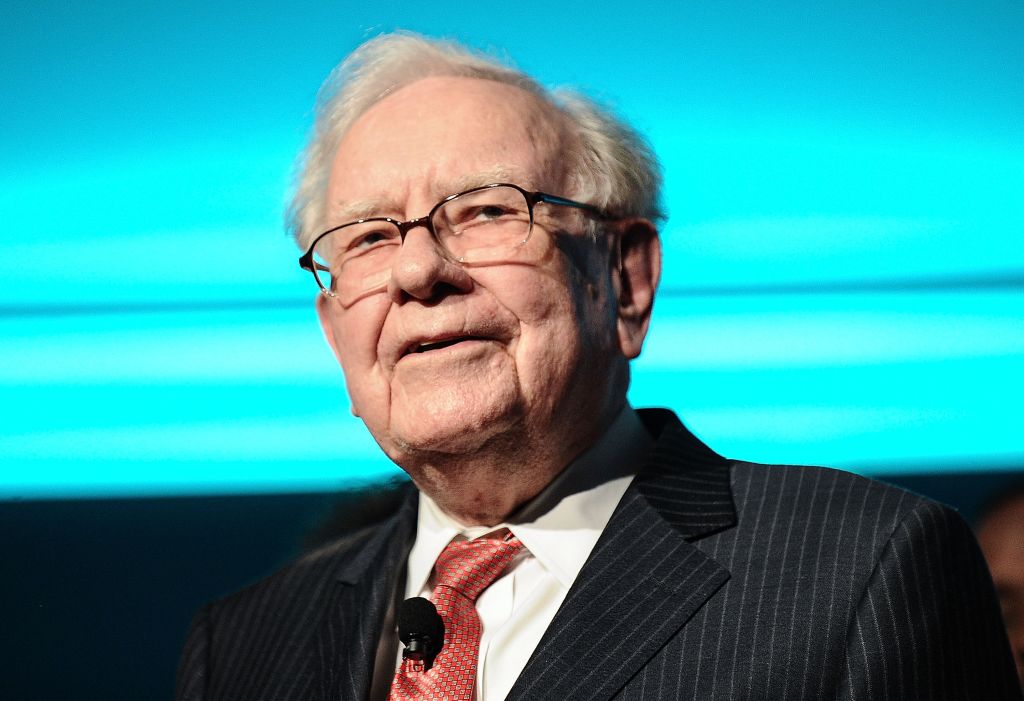Don't Cut the Cord on These TV and Cable Stocks
There's upheaval in the entertainment business, but Comcast, CBS and Time Warner should thrive no matter what happens.

Over the past year, the television industry has seen more backroom deals and attempted takeovers than a typical episode of House of Cards. Now more than ever, investors need to stay glued to their screens.
A revolution in the way we get our home entertainment is behind the wave of consolidation as companies scramble to broaden their size and reach—as well as jettison divisions that are inhibiting their growth. Flat-screen television sets are competing with apps that let you watch shows on a smartphone or tablet, and cable customers, frustrated by rising prices, are turning to cheaper online alternatives, such as Netflix, Hulu and Amazon Prime.
Complicating matters is the debate over “net neutrality.” Net neutrality refers to a Federal Communications Commission plan to require Internet service providers to transmit all data that travels over their networks at equal speeds. The issue intensified after a federal court struck down FCC rules dealing with net neutrality in early 2014. On February 4, FCC Chairman Tom Wheeler unveiled a new proposal to impose tighter regulation over firms that provide Internet access and treat them more like telecommunications companies. The FCC is expected to vote on the plan on February 26.
From just $107.88 $24.99 for Kiplinger Personal Finance
Become a smarter, better informed investor. Subscribe from just $107.88 $24.99, plus get up to 4 Special Issues

Sign up for Kiplinger’s Free Newsletters
Profit and prosper with the best of expert advice on investing, taxes, retirement, personal finance and more - straight to your e-mail.
Profit and prosper with the best of expert advice - straight to your e-mail.
The cable sector can be split into two categories: distributors—the companies that own the pipes through which you receive content, such as Comcast (symbol CMCSA, $56.90) and (Charter Communications CHTR, $163.19)—and content providers—the concerns that create and package entertainment, such as CBS Corp. (CBS, $56.74), Time Warner (TWX, $80.14) and Walt Disney (DIS, $101.28), which owns the ABC broadcasting network and ESPN, among other things. (Prices and related figures are through February 4.)
Regardless of how the debate over net neutrality plays out, it’s hard to go wrong investing in a company that produces popular content that can travel anywhere, especially to foreign audiences. Content producers are vulnerable to changes in ad and licensing revenues, subscriptions and programming costs. But as viewership scatters across different platforms and devices, “Quality content will always find an outlet,” writes Morningstar analyst Neil Macker, whether it’s through an online service, a cable package or over the airwaves.
But don’t write off the distributors yet. Despite the growing number of customers who are cutting the cord—Leichtman Research Group reports that pay-TV services lost roughly 150,000 net subscribers in the third quarter of 2014, compared with a loss of about 25,000 in the year-earlier period—major cable companies have found ways to adapt to consumer habits and maintain their leverage. When it comes to delivering high-speed Internet services, “in most of the country, the fastest broadband option is the local cable company,” says Chris Marangi, who manages the Gabelli Multimedia Trust, a closed-end fund. (Watching all those streamed flicks requires a strong Internet connection, after all.) Many cable and satellite providers offer their subscribers the ability to stream shows on demand, through programs such as HBO Go, without having to rely on Netflix or Hulu. Plus, live sports events are often left out of the Web services, although a new standalone channel from satellite provider Dish Network (DISH, $76.54) that includes ESPN suggests that that this situation is changing, too.
Here are three television stocks to watch.
Comcast
Comcast customers may not like their service, but investors have plenty of reasons for liking the stock. Comcast, already the largest cable operator in the country, wants to get much bigger. If it completes the proposed merger with Time Warner Cable (TWC), its closest competitor, Comcast will increase its subscriber base by about one-third, to 70 million households, to which it can offer the lucrative “triple play” bundle of cable, Internet and phone services. The FCC, which has been taking its time mulling over the merger, is expected to rule this year..
And if the merger fails? Analyst Greg Miller, of Canaccord Genuity, says that even without Time Warner Cable, Comcast shares deserve a premium price because of the company’s leap into content with the 2013 purchase of NBCUniversal, which added film studios and cable and broadcast networks to Comcast’s cache.
Comcast is treating its shareholders generously. Since instituting a dividend in 2008, the company has increased its payout by 260%. And if the Time Warner Cable deal closes, Comcast plans to ramp up its buyback program by $2.5 billion (on top of the $2.3 billion worth of repurchases it made in the first nine months of 2014). Analysts on average see Comcast’s earnings rising by 10%, to $3.30 per share, in 2015. The stock trades at 17 times that figure, a bit more than the overall market. Comcast returned 8% over the past year.
[page break]
Time Warner
Before Time Warner Cable was targeted by Comcast, it belonged to media conglomerate Time Warner. Time Warner has steadily shed its assets over the past few years, starting with AOL and Time Warner Cable in 2009 and Time Inc. in June. The result: a pure content provider known for CNN, Turner Broadcasting and HBO, which continues to lure in subscribers with hit shows such as the violent epic Game of Thrones. HBO, which (along with sister network Cinemax) has 127 million subscribers worldwide, will expand its reach further when it launches a standalone streaming service this year.
Time Warner made headlines last year when it rejected an $80 billion buyout offer from Rupert Murdoch’s Twenty-First Century Fox (FOXA). Time Warner’s stock fell 15% in the two days after Fox withdrew its bid. But CEO Jeff Bewkes has made clear that Time Warner can stand on its own, and analysts agree. “As the largest producer of television content, Time Warner holds a very strong position,” says Morningstar’s Macker.
Like Comcast, Time Warner is spending big on its own shares. The company repurchased nearly $5 billion worth of stock in the first ten months of 2014. Time Warner has also steadily raised its dividend, at an average annual rate of 11% over the past five years. The stock, which returned a whopping 36% over the past year, sells for 17 times estimated 2015 earnings, a reasonable figure given that analysts expect earnings growth of 13% this year. (Both Comcast and Time Warner boast 1.6% dividend yields.)
CBS
CBS owns the eponymous broadcast network and 29 local TV stations, as well as a treasure trove of content. Its original programs, including hit shows such as CSI and NCIS, generate cash from their first run to syndication to online viewing and DVDs. CBS also owns the rights to key sports events, such as Thursday night National Football League games. And the company has launched its CBS All Access streaming service, which charges customers $6 a month.
Higher programming costs and uneven ad sales put pressure on CBS’s earnings in 2014, big reasons the stock lost 1% over the past year. But CBS continues to hike its quarterly dividend—most recently by 25%, to $0.15 a share—and it bought back almost $3 billion worth of shares in the first nine months of 2014. Tuna Amobi, an analyst for S&P Capital IQ, rates CBS a “strong buy,” citing diverse streams of revenue that make the company less dependent on advertising. Analysts estimate 20% earnings growth in 2015, to $3.61 per share, and a 21% jump next year. The stock trades at 16 times this year’s estimated profits.
Profit and prosper with the best of Kiplinger's advice on investing, taxes, retirement, personal finance and much more. Delivered daily. Enter your email in the box and click Sign Me Up.

-
 You Saved for Retirement: 4 Pressing FAQs Now
You Saved for Retirement: 4 Pressing FAQs NowSaving for retirement is just one step. Now, you have to figure out how to spend and maintain funds. Here are four frequently asked questions at this stage.
-
 How to Stop These 5 Risks From Wrecking Your Retirement
How to Stop These 5 Risks From Wrecking Your RetirementYour retirement could be jeopardized if you ignore the risks you'll face later in life. From inflation to market volatility, here's what to prepare for.
-
 Hesitating to Spend Money You've Saved? How to Get Over It
Hesitating to Spend Money You've Saved? How to Get Over ItEven when your financial plan says you're ready for a big move, it's normal to hesitate — but haven't you earned the right to trust your plan (and yourself)?
-
 If You'd Put $1,000 Into Coca-Cola Stock 20 Years Ago, Here's What You'd Have Today
If You'd Put $1,000 Into Coca-Cola Stock 20 Years Ago, Here's What You'd Have TodayEven with its reliable dividend growth and generous stock buybacks, Coca-Cola has underperformed the broad market in the long term.
-
 If You Put $1,000 into Qualcomm Stock 20 Years Ago, Here's What You Would Have Today
If You Put $1,000 into Qualcomm Stock 20 Years Ago, Here's What You Would Have TodayQualcomm stock has been a big disappointment for truly long-term investors.
-
 If You'd Put $1,000 Into Home Depot Stock 20 Years Ago, Here's What You'd Have Today
If You'd Put $1,000 Into Home Depot Stock 20 Years Ago, Here's What You'd Have TodayHome Depot stock has been a buy-and-hold banger for truly long-term investors.
-
 If You'd Put $1,000 Into Bank of America Stock 20 Years Ago, Here's What You'd Have Today
If You'd Put $1,000 Into Bank of America Stock 20 Years Ago, Here's What You'd Have TodayBank of America stock has been a massive buy-and-hold bust.
-

 If You'd Put $1,000 Into Oracle Stock 20 Years Ago, Here's What You'd Have Today
If You'd Put $1,000 Into Oracle Stock 20 Years Ago, Here's What You'd Have TodayORCL Oracle stock has been an outstanding buy-and-hold bet for decades.
-
 If You'd Put $1,000 Into Sherwin-Williams Stock 20 Years Ago, Here's What You'd Have Today
If You'd Put $1,000 Into Sherwin-Williams Stock 20 Years Ago, Here's What You'd Have TodaySherwin-Williams stock has clobbered the broader market by a wide margin for a long time.
-
 If You'd Put $1,000 Into UnitedHealth Group Stock 20 Years Ago, Here's What You'd Have Today
If You'd Put $1,000 Into UnitedHealth Group Stock 20 Years Ago, Here's What You'd Have TodayUNH stock was a massive market beater for ages — until it wasn't.
-
 If You'd Put $1,000 Into Berkshire Hathaway Stock 20 Years Ago, Here's What You'd Have Today
If You'd Put $1,000 Into Berkshire Hathaway Stock 20 Years Ago, Here's What You'd Have TodayBerkshire Hathaway is a long-time market beater, but the easy money in BRK.B has already been made.